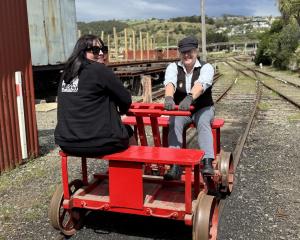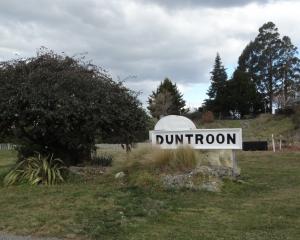A heritage New Zealand review of Oamaru's historic precinct has recommended much of the town's central business district be preserved because of its historical significance.
The 127-page report, written by Heather Bauchop, came after a call from the Oamaru Whitestone Civic Trust last year for a review of the Harbour-Tyne St Historic Area.
The trust was seeking the inclusion of a small portion of the town's main street in The New Zealand Heritage List.
Instead, an area which covers all of Lower Thames St, including some of its side streets, has been proposed.
The report has been described by some as a win for tourism and heritage while others have taken a more cautious approach, welcoming the proposal provided it does not hinder economic growth.
Oamaru heritage stalwart and Waitaki District councillor Peter Garvan was "thrilled'' Heritage New Zealand had recognised more of the town as historic than the trust had expected.
Cr Garvan said recognition as an area or precinct was more valuable than a "building-by-building'' approach to preservation, which would not preserve the area's overall character.
Preserving the streetscape could allow for the "adaptive re-use'' of buildings. The BNZ building in Lower Thames St was a "perfect example'' where the property owner had redeveloped a building while keeping the building's historic frontage.
"The single building idea is a dangerous approach,'' Cr Garvan said.
"Someone will have a building and put a bulldozer through it and suddenly you've got an inappropriate building.''
Heritage New Zealand Otago Southland area manager Jonathan Howard, of Dunedin, said the strength of Oamaru's historic centre was in the "density'' of the 119 places identified in the report.
"Given the scale, everything's in very good walking distance. It's a very intimate experience,'' Mr Howard said.
"The most obvious, the most tangible, way we connect with buildings is when we're walking down the street, because invariably, most of us don't get to go into all of these buildings.
"But it is about the stories. It's the function behind that facade, why the building is there.''
Inclusion on the list did not impose any regulation on property owners, but rather "protection comes about when local authorities schedule places or areas in their district plans under the Resource Management Act 1991''.
Waitaki District Council senior planner Mike Searle, who is leading a review of the council's district plan, said the Heritage New Zealand review had identified buildings for future heritage status. It was possible that with an expanded heritage area in Oamaru, the business-heritage zoning could also expand.
The current business-heritage zone extended from the southern end of Lower Thames St through to the Oamaru Harbour area, which is also recognised as a separate historic place.
Though site development standards were stricter in the business-heritage zone, the business-heritage zoning permitted "quite a wide range of uses'' without a resource consent.
The "community document'' was still in the consultation phase and the plan was not expected to be notified until the middle of next year.
Waitaki Mayor Gary Kircher praised the review's recognition of Oamaru's historic places, but said owners' interests needed to be considered.
"We don't want to stymie growth. It's really important that people can get on and do things in their buildings, and with their buildings, that make sure they keep good productive use for the future. I don't want to see us just lock everything up as a part of the past, and then it ends up that it has no future.''
Otago Chamber of Commerce North Otago advisory board chairman Stephen Halliwell said heritage was a valuable resource for the community but added it was important to ensure the buildings could support viable businesses.
Submissions on the review close on July 8.












